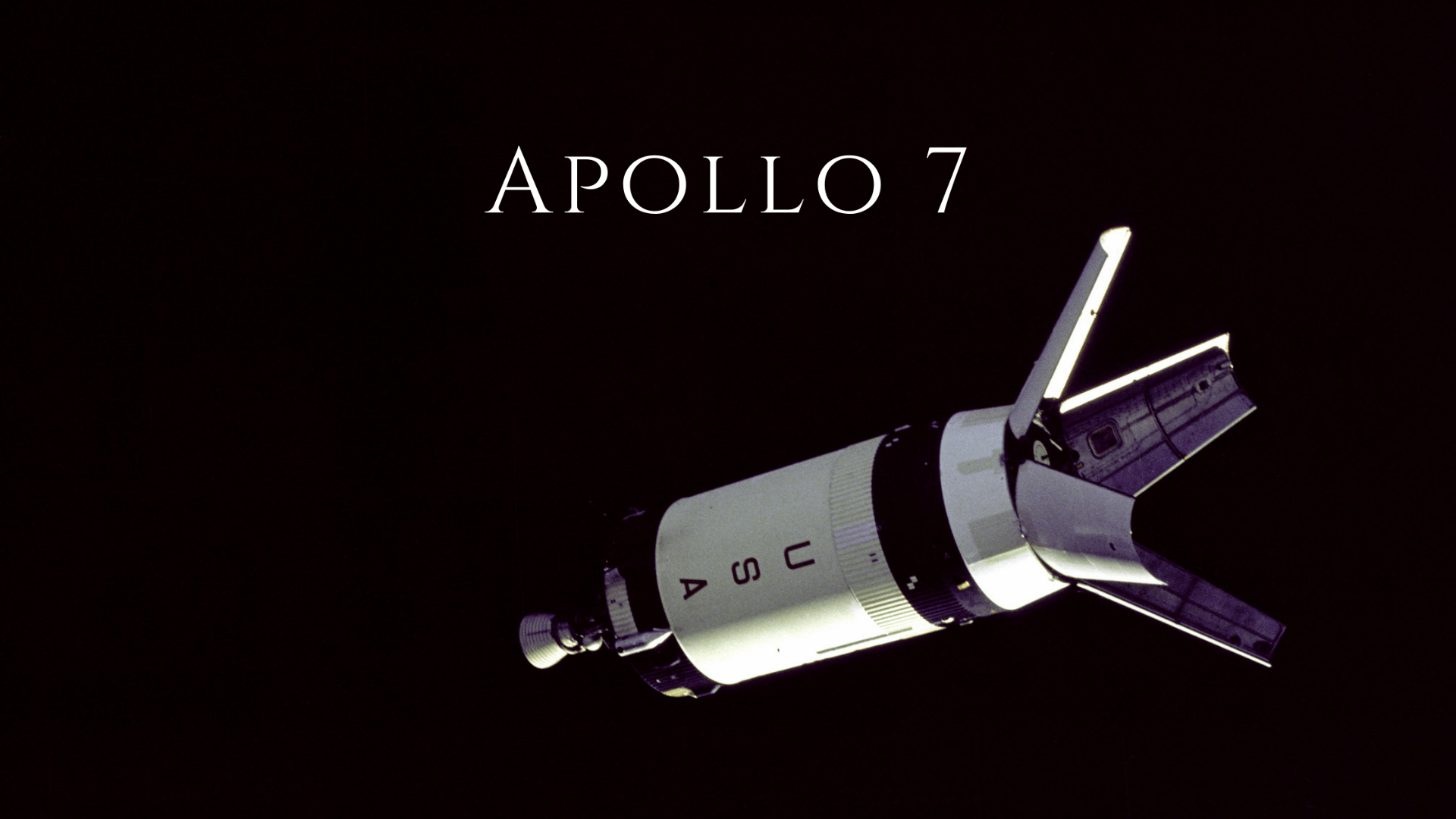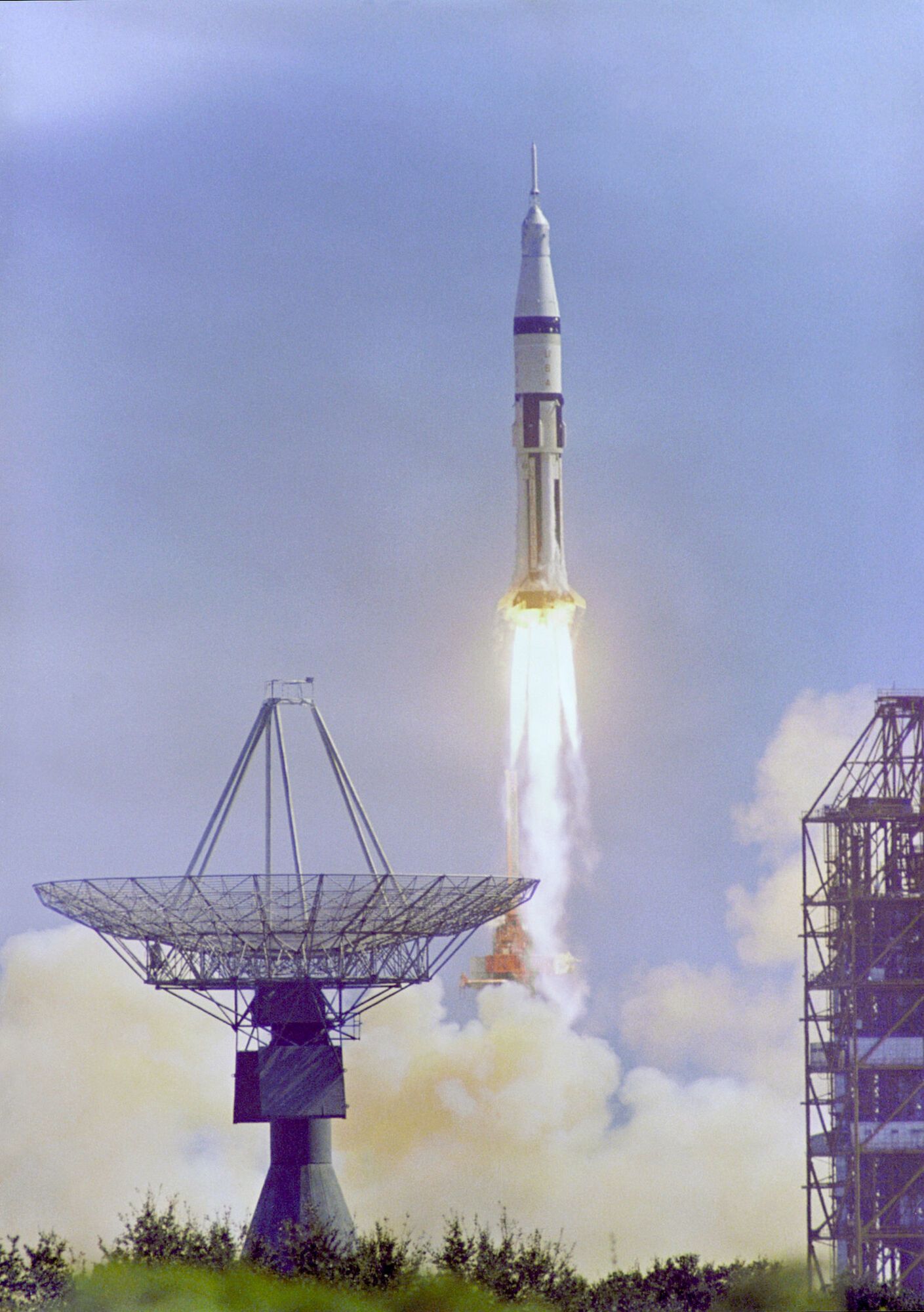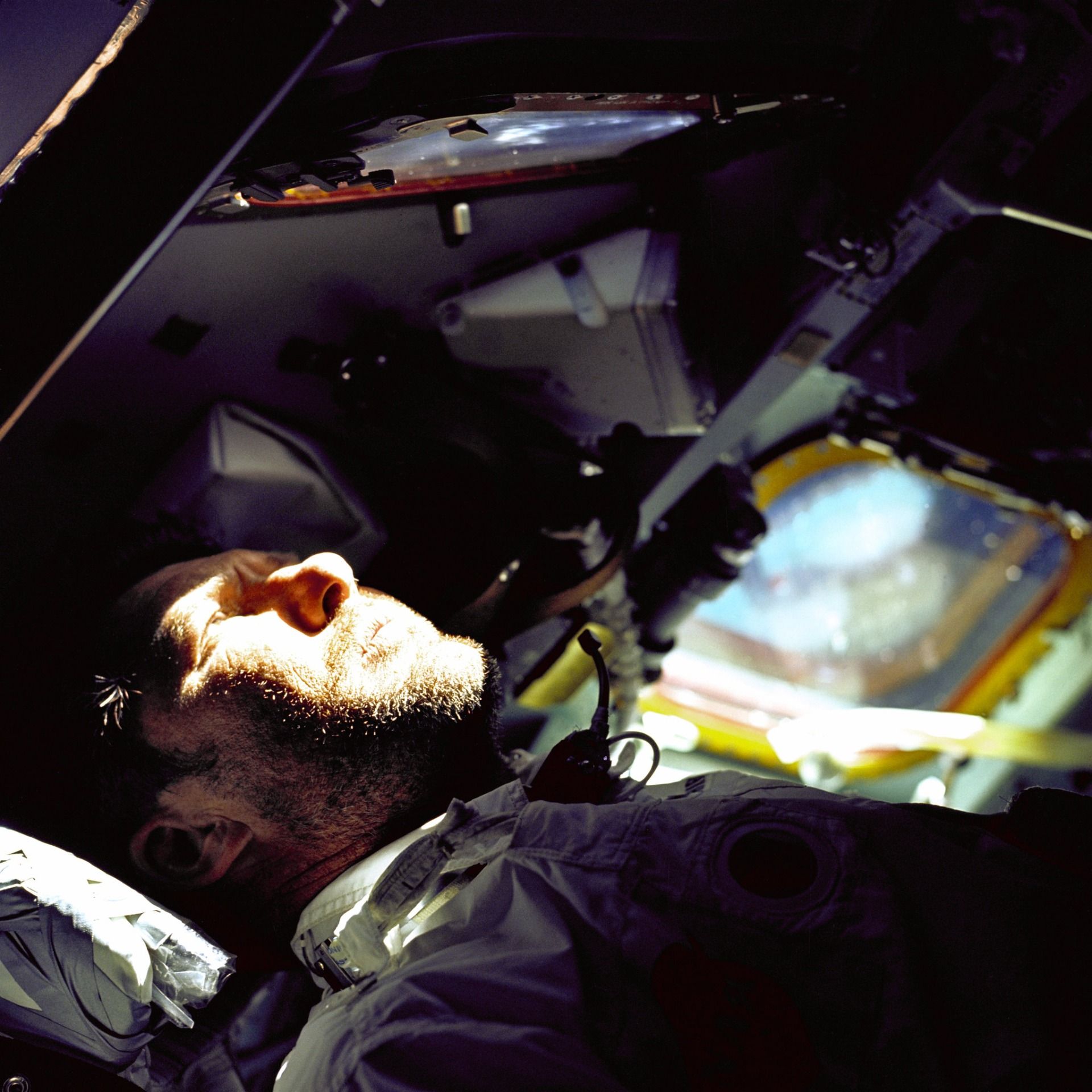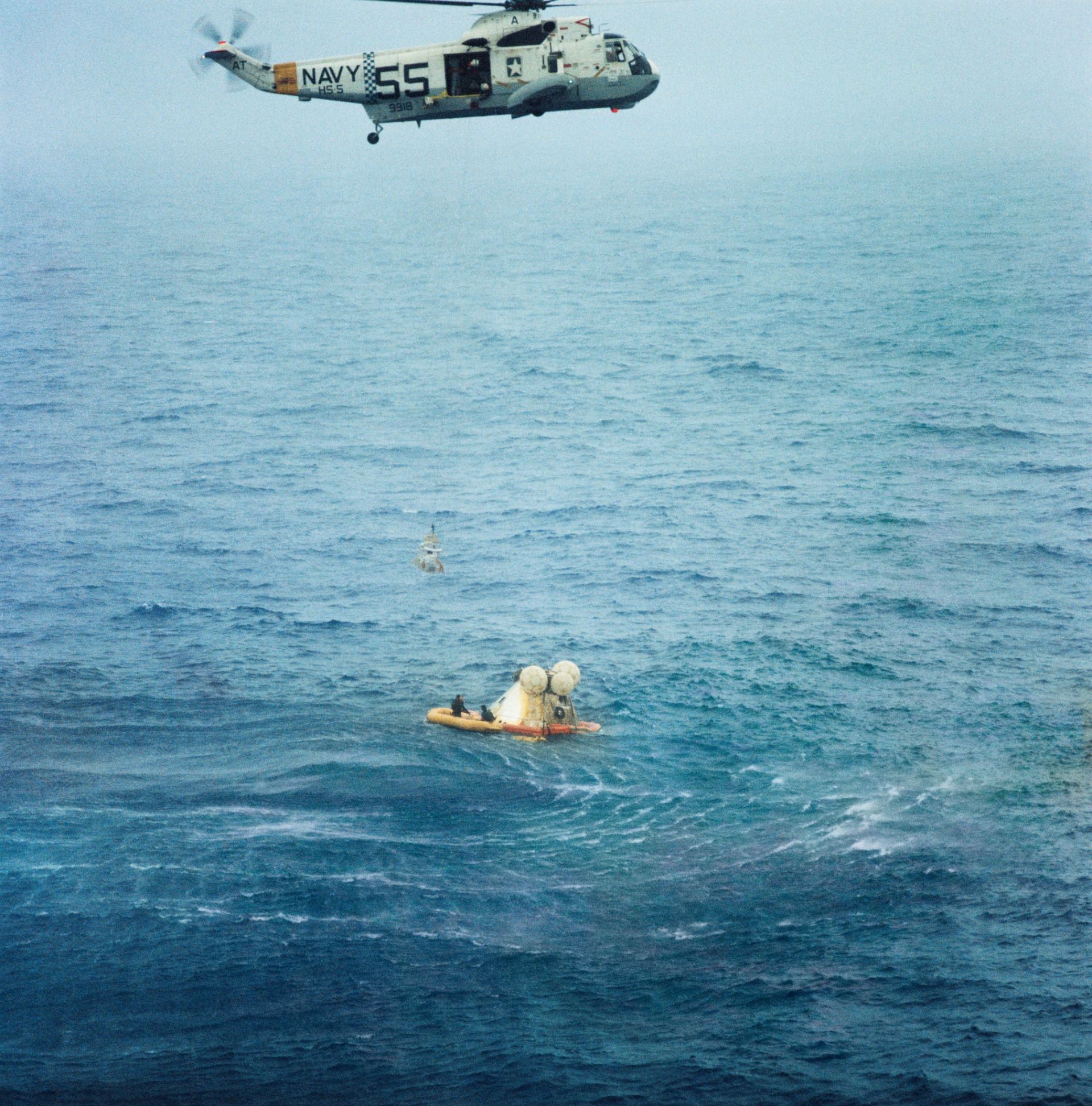
Apollo 7

The launch occurred on October 11, 1968, and during the countdown, the wind was blowing heavily, and according to safety rules, the launch should have been scrubbed. This is due to the probability of the CM being blown back over land in the event of an abort. Apollo 7 was also equipped with less protective Apollo 1-style crew couches comparative to later versions. Schirra later said he felt as though the launch should have been scrubbed, but managers yielded under pressure and allowed the launch to occur. Liftoff was flawless, and the Saturn IB performed well. There were no significant anomalies during the boost phase, and the astronauts described this period as very smooth. This flight made the 45-year-old Schirra the oldest person at that time to enter space and became the only astronaut to fly on all three of NASA's human spaceflight missions; Mercury, Gemini, and Apollo.
During the first three hours of flight, the astronauts performed two simulations that tested some of the actions that would be necessary during a lunar mission. First, with the S-IVB still attached, they maneuvered the craft as they would for burns during a lunar mission. Then, Schirra turned the CSM around after separating from the S-IVB and approached a docking target painted on it which simulated the LM docking maneuver that would occur on Moon-bound missions. After stationkeeping with it for a short period, Schirra let S-IVB drift away in preparation for the following day's rendezvous attempt.

The rendezvous was complicated because the spacecraft lacked a rendezvous radar, something the Lunar bound missions would have. Additionally, the SPS, the engine that would later bear the responsibility for getting Apollo CSMs in and out of lunar orbit, had never undergone in-flight testing. Despite the astronauts' confidence in the SPS, they were concerned it might fire unexpectedly, causing an early end to the mission. However, the rendezvous would also require Eisele to use the sextant and telescope to compute the final burns, and Schirra using the ship's reaction control system thrusters. They successfully completed the rendezvous despite the S-IVB tumbling out of control.
The first seven-minute television broadcast took place on October 14, where the crew showed off the spacecraft and views of the southern United States from space. This was the first truly live television broadcast from an American spacecraft. Broadcasts of about 10 minutes each followed daily, during which the crew educated the audience about spaceflight. After they returned to Earth, the telecasts were awarded a special Emmy.
Throughout the remainder of the flight, the crew continued to run tests on the CSM, including the navigation, propulsion, electrical, environmental, and thermal control systems. All checked out well, but Eisele found that navigation was not as simple as it was anticipated. The SPS engine had been fired eight times by the end of the mission without any problems arising.

After ground control approved a new procedure on Day 8 that caused the computer to freeze, Eisele communicated his anger with ground control, which Schirra later thought was the main occasion Eisele upset Mission Control. The next day there were more disputes with Mission Control when Schirra needed to repeatedly fire the RCS system in order to keep the spacecraft stable during a test.
Additionally, Schirra repeatedly expressed that the re-entry should be conducted with their helmets off, causing tension with Mission Control. Schirra felt there was a risk that their eardrums could burst because of the sinus pressure they all were experiencing due to their colds. They wanted to equalize the pressure as it increased during re-entry by pinching their noses and blowing, avoiding their eardrums bursting. However, this was impossible to accomplish while wearing their helmets. Schirra refused advice that the helmets should be worn, arguing that it was his prerogative as commander to decide. Therefore, no helmets were worn during re-entry. Apollo 7 splashed down on October 22, 1968, 200 nautical miles southwest of Bermuda and 7 nautical miles north of USS Essex, the recovery ship. The mission lasted 10 days, 20 hours, and 9 minutes.
Despite the strife between the crew and Mission Control, the mission successfully met all of the objectives required to verify the Apollo command and service module's flight worthiness. This allowed Apollo 8's flight to the Moon to proceed just two months later. Apollo 7's success brought confidence to NASA's space program, and three weeks after Apollo 7 splashed down, Apollo 8's launch in late December was green-lit with the addition of the Lunar orbit.
